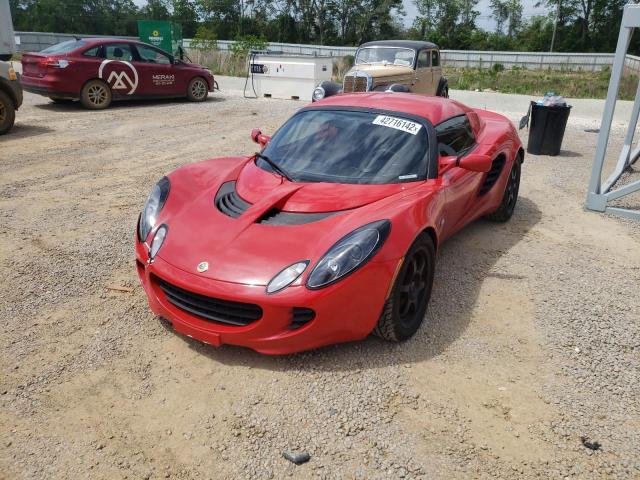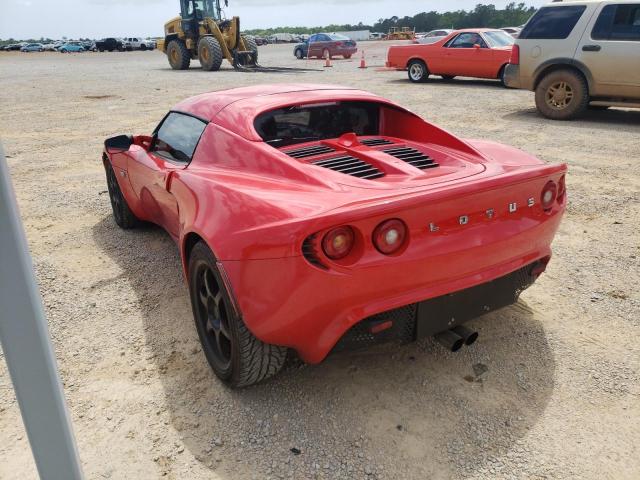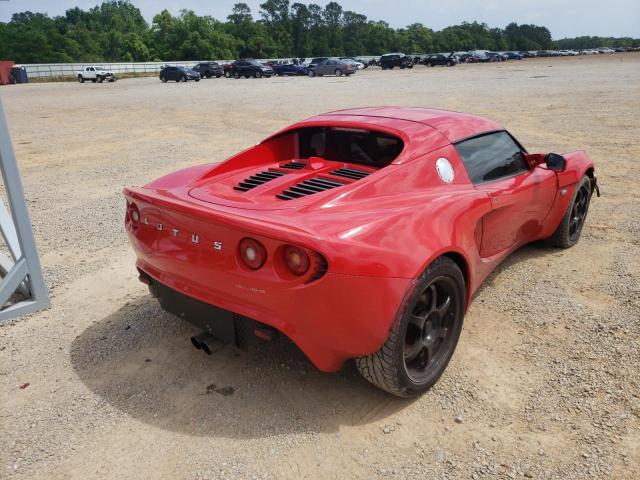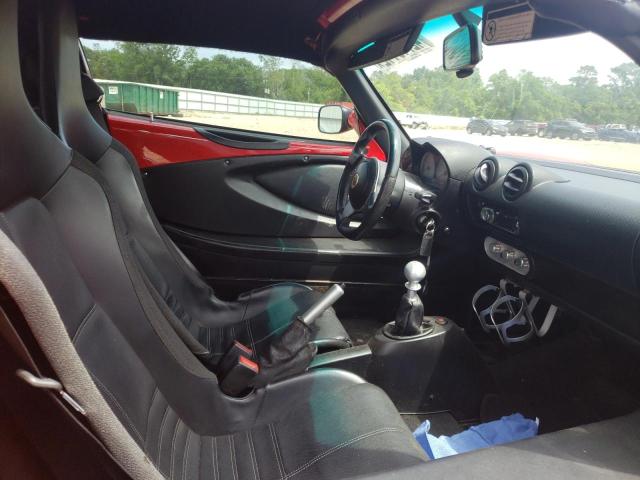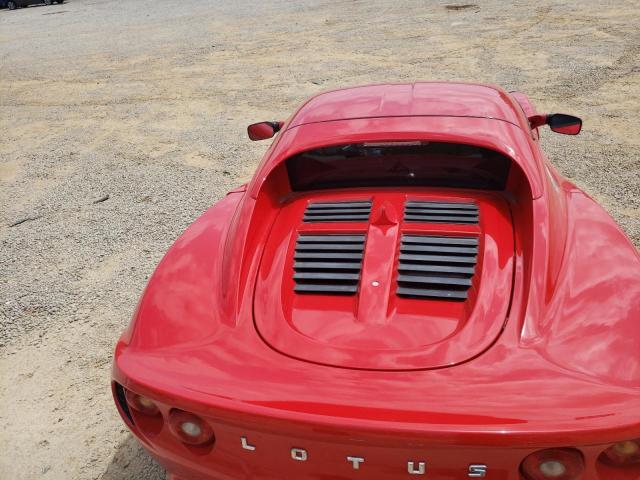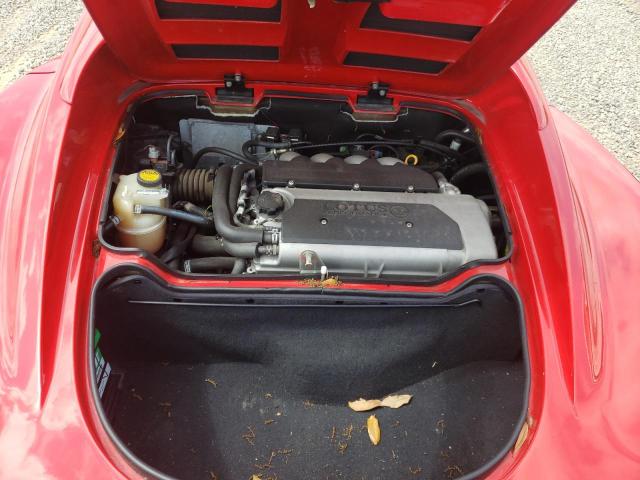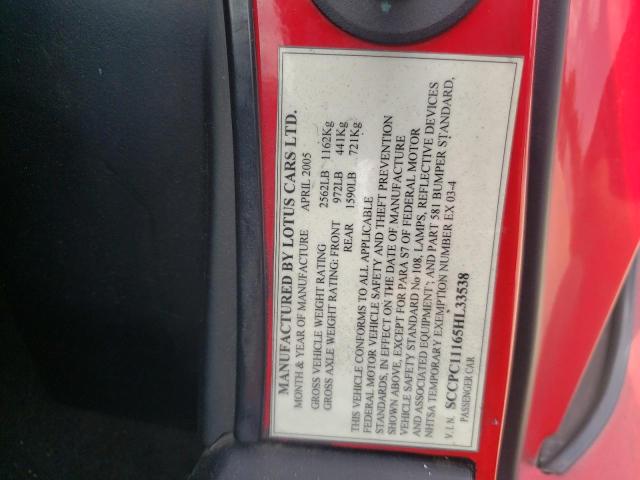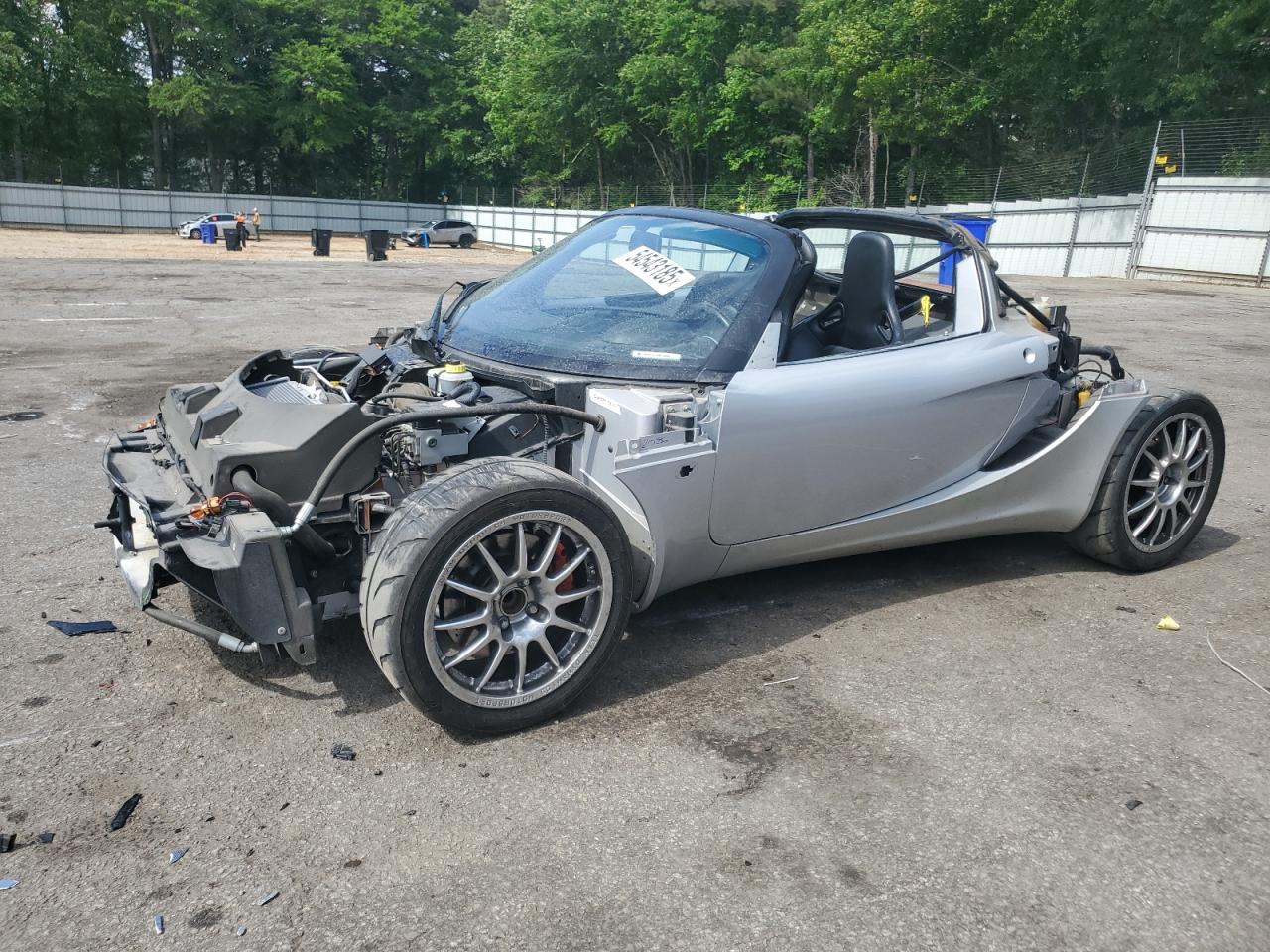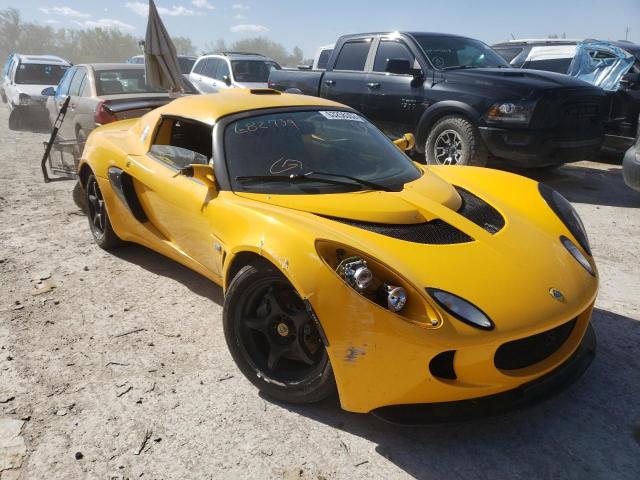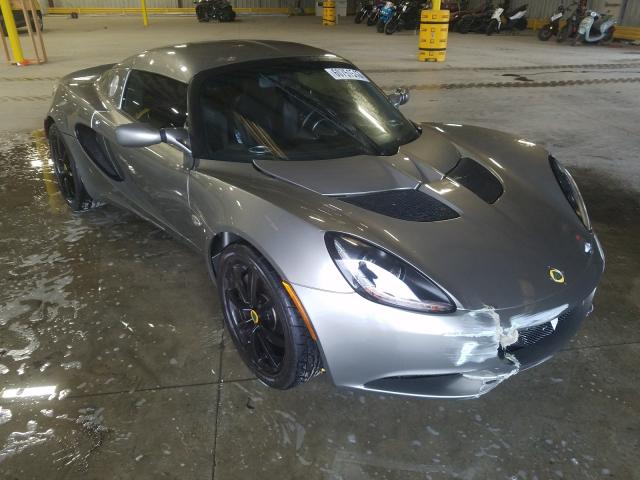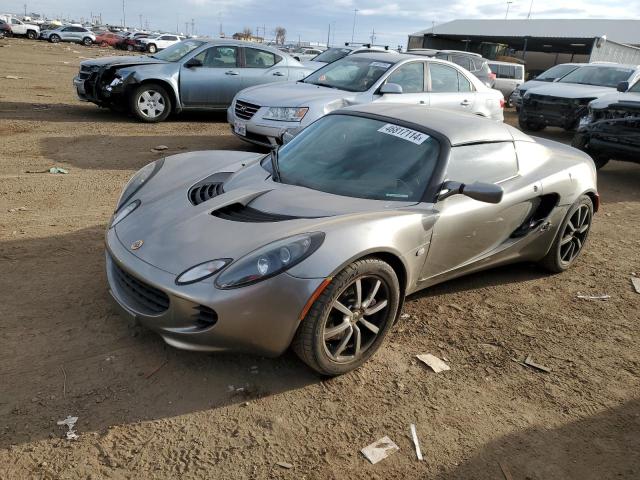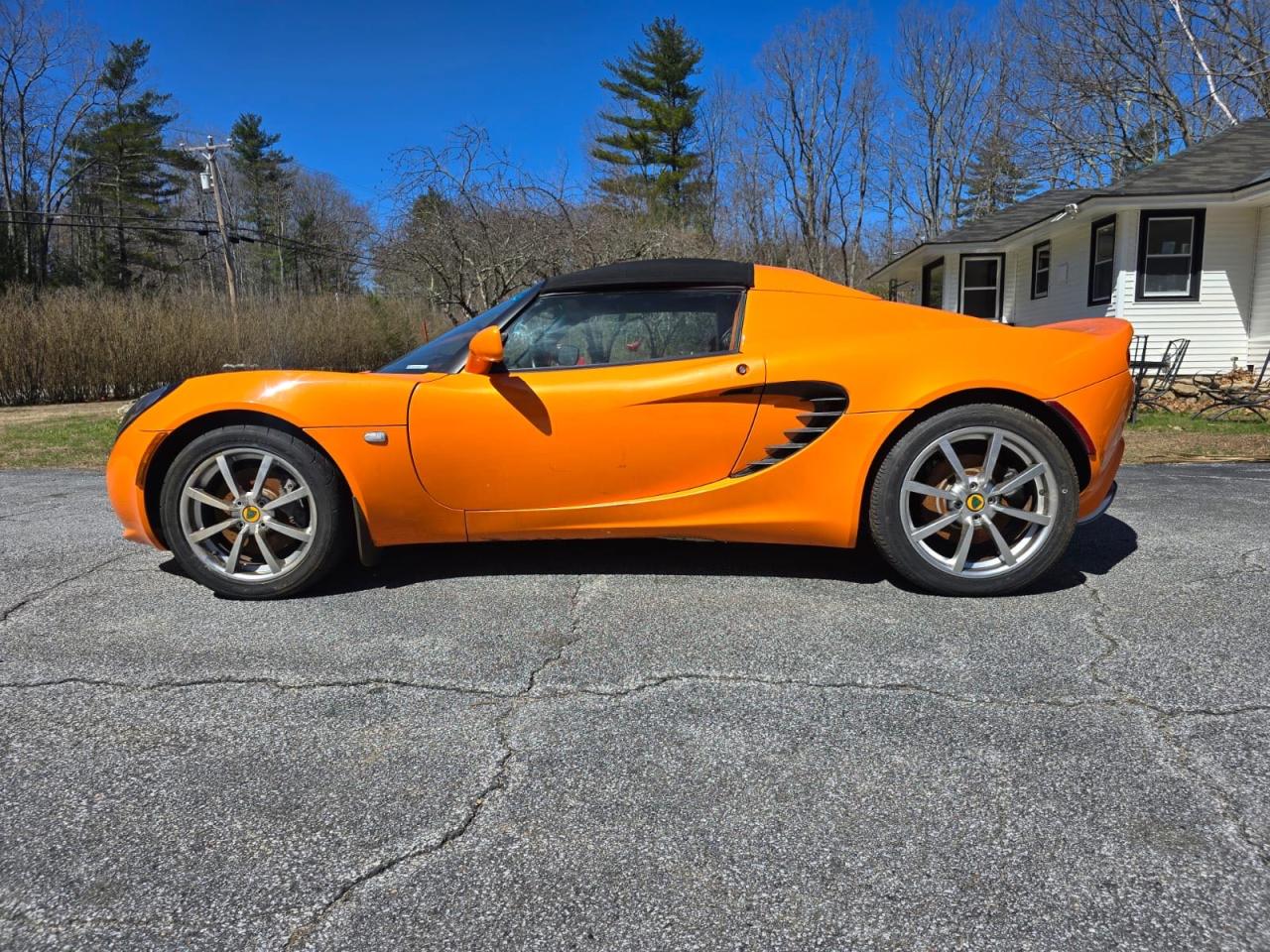2005 LOTUS ELISE | SCCPC11165HL33538
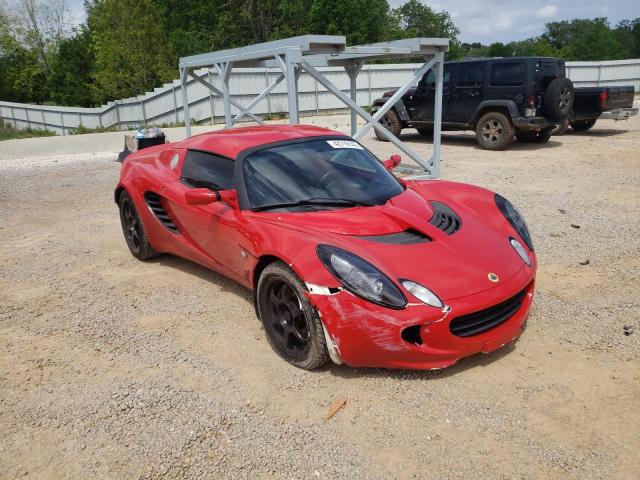 ❯
❯Lot details
- Sale Date2022-05-24
- Lot Number42716142
- ACV63759 $
- Sale documentAL - undefined
- LocationAL - MOBILE SOUTH
- Odometer4,595 miles (7,395 km)
- Primary DamageFRONT END
Vehicle specifications
5
~$52,000
Engine: 1.8L Supercharged I4
Torque: 215 Nm
0–100 km/h: ~4.6 s
The Lotus Elise SC wasn’t about numbers — it was about sensation. With just 218 hp, it might seem modest, but in a car weighing under 950 kg, that power translated into raw, unfiltered acceleration, telepathic handling, and unmatched driver connection. The Elise SC sprinted from 0–100 km/h in 4.3 seconds, outpacing many cars with twice the horsepower.
The mid-mounted, supercharged Toyota engine combined reliability with high-revving aggression and instant throttle response. The manual gearbox was slick, mechanical, and satisfying. But what truly made the Elise iconic was its unassisted hydraulic steering, double wishbone suspension, and bonded aluminum chassis — creating a car that responded to the slightest input with surgical precision.
Every element of the Elise was designed for purity: no power steering, minimal insulation, no stability control (early versions). You felt every bump, every gear, every tire load shift — not as discomfort, but as information.
Visually, it was compact and purposeful, with minimal overhangs, exposed roll bars, and functional aerodynamics. Inside, it was spartan: bucket seats, metal floor, and just enough trim to meet homologation standards. And that was the point — nothing separated you from the drive.
The Lotus Elise SC earns its place in the performance registry as one of the purest sports cars ever built, a machine that delivers thrills not through brute force, but through lightweight engineering, driver engagement, and Lotus’ timeless “simplify, then add lightness” philosophy.
Final Bid Lotus Elise (2005)
$14,700
$19,325
$28,000
Body Styles
The Lotus Elise of this era was offered exclusively as a 2-door, 2-seater convertible roadster with a lightweight bonded aluminum chassis and a manually removable soft-top (optional hardtop available). It was an ultra-compact car, designed with one goal: minimalism for maximum driver connection. The mid-engine layout and low ride height emphasized perfect weight distribution and razor-sharp handling. Later facelift versions introduced LED tail lights, reshaped front bumpers, and slightly more refined interiors, though always remaining focused on performance over comfort. Even the doors were lightweight and thin, reflecting Colin Chapman’s ethos of “adding lightness.”
Model Name Meaning (Manufacturer)
The name “Elise” was reportedly chosen in honor of Elisa Artioli, the granddaughter of Lotus chairman Romano Artioli (who also led Bugatti in the 1990s). For Lotus, the name embodied the car’s intent: graceful, lightweight, and agile — qualities traditionally associated with the feminine but applied here to a ferocious, uncompromising driving machine. The Elise marked the return of true driver-first engineering in an era increasingly dominated by weighty electronics and luxury. Lotus used the Elise to reassert its place as the purist’s carmaker, and this generation cemented that legacy with global success.
Model Name Meaning (Languages)
“Elise” is used without translation across all global markets. In Latin-rooted languages (like Italian, Spanish, and French), the name carries a feminine elegance, subtly reinforcing the car’s design ethos: lithe, compact, and beautifully balanced. In English-speaking contexts, the name is clear and easy to pronounce, avoiding alphanumeric coldness. It became instantly synonymous with minimalist motoring pleasure and mechanical purity — whether whispered in a British paddock or shouted over a canyon road in California.
Body & Interior Colors and Rims
The Lotus Elise Series 2 embodies the brand’s purist philosophy of lightweight engineering, minimalist design, and uncompromising driver engagement. Its body colors, interior treatments, and wheel configurations were crafted not to overwhelm with luxury, but to celebrate the Elise’s singular focus on performance and mechanical purity — all while still allowing for eye-catching visual customization.
The exterior color palette ranged from subtle classics to vibrant, motorsport-inspired tones, often finished in lightweight, hand-laid fiberglass bodywork. Timeless paints like Arctic Silver, Starlight Black, and Storm Titanium provided understated elegance and helped mask road grime from daily or track use. More expressive options like Chrome Orange, Laser Blue, Canyon Red, Aspen White, and Magnetic Blue played up the car’s exotic lines and mid-engine proportions. Iconic colors such as British Racing Green and Solar Yellow paid homage to Lotus’s motorsport heritage, especially popular on special editions like the 111S or Type 25. Some limited-production models featured matte finishes, stripe kits, or racing-inspired accents, especially in motorsport-derived variants like the Sport 190 or Exige-based track editions.
Inside, the Elise remained intentionally stripped-down, designed for driving purity over comfort. Most models came with exposed aluminum flooring, minimal sound deadening, and lightweight bucket seats finished in cloth, leather, or Alcantara, depending on trim and market. Common interior color schemes included Black, Tan, Red, or Blue, often with contrast stitching or optional color-matched seat inserts to complement the exterior paint. The exposed aluminum shift linkage, drilled pedals, and sparse dashboard underscored the car’s raw, mechanical nature. Optional upgrades — such as carbon-fiber seat shells, sport steering wheels, or trim panels — were available through Lotus or aftermarket channels for enthusiasts looking to personalize their cabins without sacrificing weight or focus. Air conditioning and sound systems were optional, with many drivers opting to delete them entirely to save weight.
Wheels on the Elise were designed for low unsprung mass, sharp response, and compact dimensions, consistent with the car’s featherweight philosophy. Most standard variants used 16-inch front and 17-inch rear cast or forged alloy wheels, often in silver, gunmetal, or black finishes. Sport packages and limited editions included lightweight forged wheels, frequently designed by manufacturers like OZ Racing or Lotus Performance. Some variants — such as the 111R or Elise SC — featured unique split-spoke or Y-spoke patterns, and were often paired with Yokohama Advan Neova or A048 semi-slick tires for maximum grip. Wider rear wheels and staggered setups were used across the board to optimize handling, while wheel center caps and valve stems could be color-matched or left bare depending on performance intentions.
Top Expensive Options
- Touring Pack (leather trim, carpets, sound insulation): ~$1,500
- Sport Pack (Bilstein dampers, upgraded wheels): ~$2,000
- Air Conditioning: ~$1,250
- Detachable Hardtop: ~$1,200
- Limited Slip Differential: ~$1,500
- Traction Control (post-2006): ~$800
- Metallic or Signature Paint Finish: ~$900
- Lightweight Forged Alloy Wheels: ~$1,000
- Twin Oil Coolers: ~$700
- Custom Stripe Package / Motorsport Paint: ~$500+
vs Competitors
The Elise was an outlier even among lightweight sports cars. Compared to the Mazda MX-5 Miata, it was far more hardcore — quicker, less comfortable, and ten times more communicative. Against the Honda S2000, it had better mid-corner balance and a lighter chassis, but lacked top-end power and daily usability. The Porsche Cayman was more refined and usable, but nowhere near as visceral. Even against exotics like the Alfa Romeo 4C (which came later), the Elise won in feel and feedback.
No car in its price range delivered the Elise’s sense of immediacy, making it a favorite among purists, track-day enthusiasts, and driving schools. It offered a level of feedback that even supercars costing five times more often struggled to match — at the expense of comfort, but with unmatched joy behind the wheel.
Fun Fact
The Lotus Elise was so lightweight — often under 900 kg — that even with modest horsepower it outpaced more powerful cars in real-world handling and braking tests. Its bonded aluminum chassis was so innovative that it became the basis for other vehicles, including the original Tesla Roadster, which used the Elise’s platform and structure to build the world’s first successful electric sports car.



